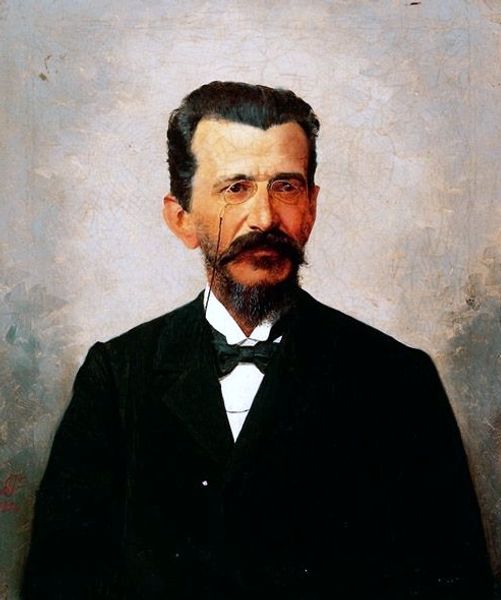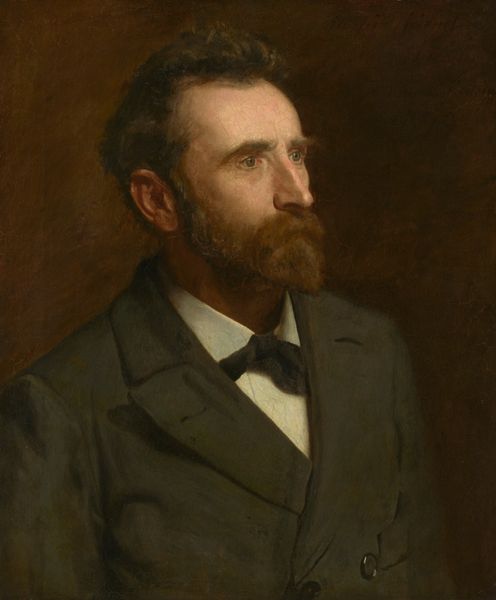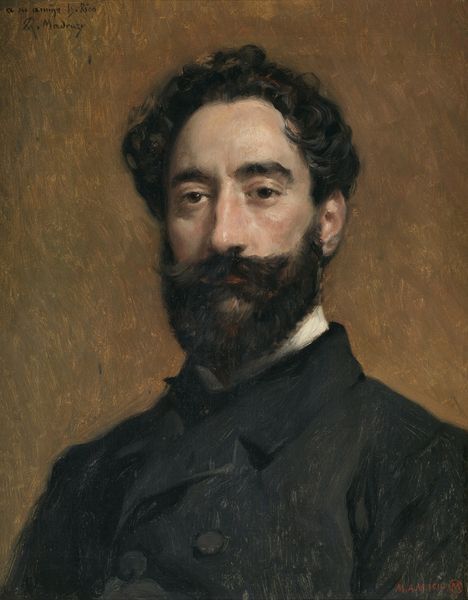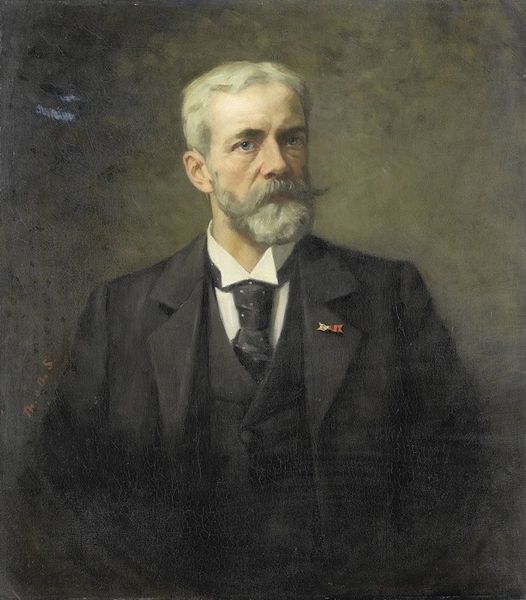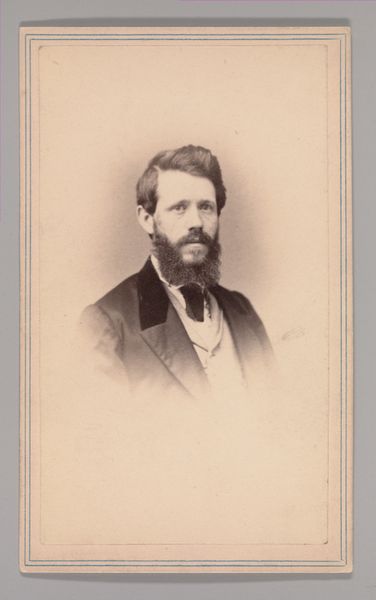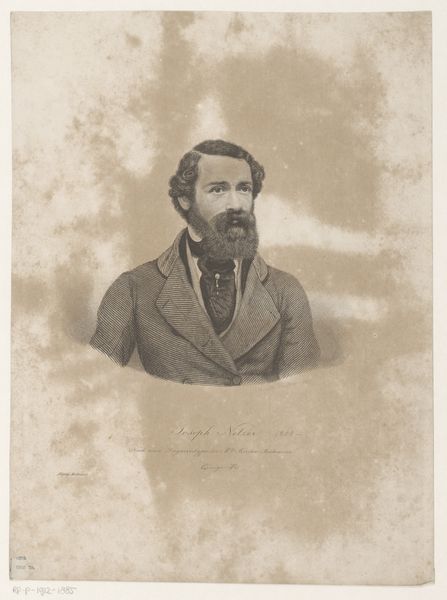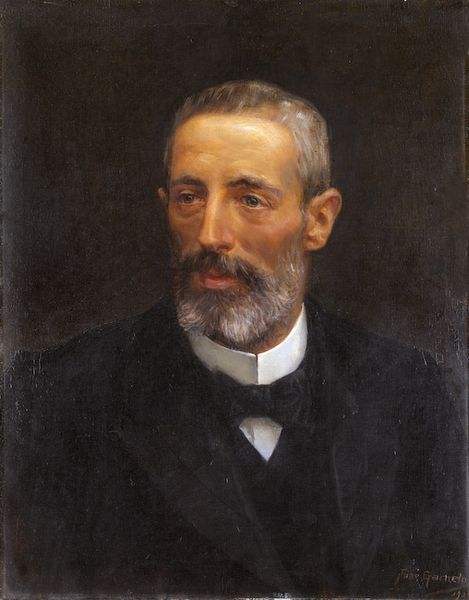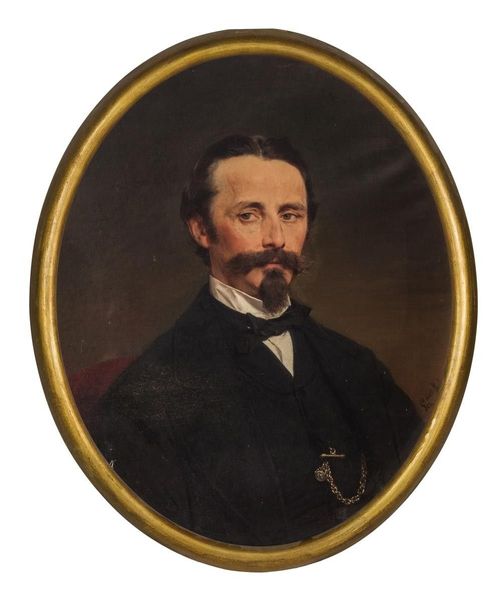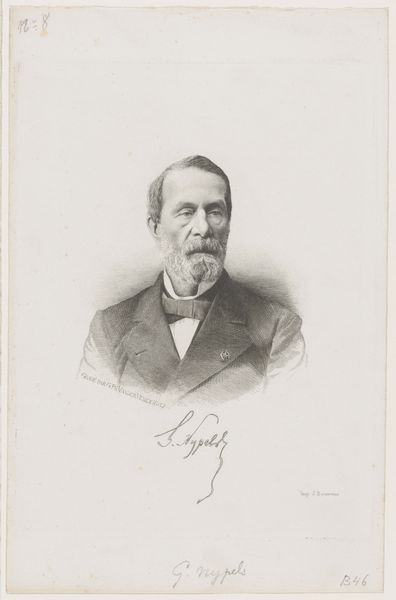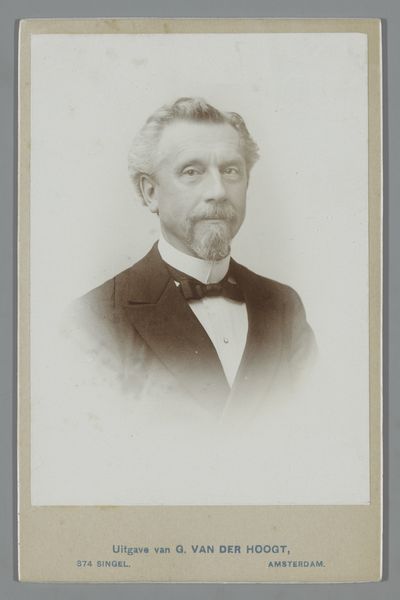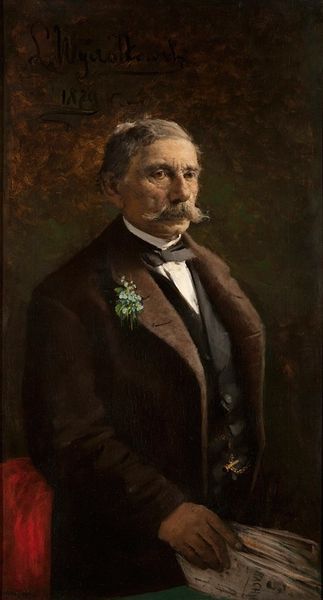
painting, oil-paint
#
portrait
#
painting
#
oil-paint
#
academic-art
#
realism
Copyright: Public domain
Curator: I am struck by the sitter's penetrating gaze. It’s like he's appraising you even now. Editor: Yes, a commanding presence. This is José Ferraz de Almeida Júnior's "Bust of a Man," dating to 1850. It’s an oil on canvas, held here at the Museo de Arte de Sao Paulo. It seems quite formal. Curator: Incredibly so. The gentleman's meticulous beard, his carefully knotted tie. It's almost theatrical, steeped in the visual language of 19th-century bourgeois respectability. This was a period of emerging Brazilian national identity; portraiture played a crucial role in solidifying hierarchies, gender roles and power structures. One has to wonder about the unseen power dynamics involved when Almeida Junior painted this work. Who was this man and what role did he play in Brazil’s early national story? Editor: Right, and the iconography bears it out. Dark suit, subdued colors. There's a somber mood to the whole piece, reinforced by the shadowy background. Consider the power associated with a man displaying a strong, but neatly tamed, beard. It's a controlled virility. Also, the tie’s perfect bow – it suggests the binding nature of societal expectations and tradition, a perfect accessory of status and control. Curator: Definitely. And this controlled representation of masculinity serves specific political purposes. Images like this upheld an ideal of civilized masculinity crucial for the political stability demanded during that time, an era rife with abolition debates, growing urban hubs, and elite desires of appearing 'modern'. It makes you ponder whose stories and representations are prioritized, whose histories get literally "painted into" our national narratives. Editor: Absolutely. Looking closely, there are so many visual cues related to a yearning for order, balance, almost like a ritualized display of identity. I am captivated by his eyes though, their slightly reddened and fatigued quality that speaks to inner tension despite the outward appearance of composure. It is an enduring image – the eternal, perhaps, of presenting a composed facade for posterity. Curator: Yes, a carefully manufactured composure that belies what I would suspect was a period of huge political and social upheaval, here in Brazil, which Almeida Junior does so skillfully represent! What this artwork showcases about image, nation, gender, and race are important to note, consider, and deconstruct even to this day! Editor: A captivating reminder that images not only represent, they participate in shaping the very culture around them.
Comments
No comments
Be the first to comment and join the conversation on the ultimate creative platform.
